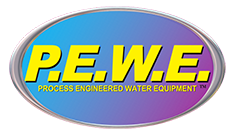 The Earth may be covered with water but only 3% of it is fresh. That is ok for many industries who can use seawater for a number of purposes. One of the main ways companies use it is as a coolant. The problem is that without the proper chemical dosing, algae in the seawater can cause a host of problems. Dealing with algae and other marine life growth leads many to turn to chlorination techniques to rid the water of problematic life forms. Using chlorination to clean seawater is a common strategy to combat this dilemma.
The Earth may be covered with water but only 3% of it is fresh. That is ok for many industries who can use seawater for a number of purposes. One of the main ways companies use it is as a coolant. The problem is that without the proper chemical dosing, algae in the seawater can cause a host of problems. Dealing with algae and other marine life growth leads many to turn to chlorination techniques to rid the water of problematic life forms. Using chlorination to clean seawater is a common strategy to combat this dilemma.
Chemical dosing systems are able to give the water a continuous supply of chlorine, which is useful in inhibiting marine life growth in the water. The chemical dosing materials are actually activated when mixed with the seawater that has undergone an electrolysis process. These systems need constant monitoring.
The two main ingredients used are chlorine and sodium hypochlorite. Sodium chlorite is a compound formed from a sodium ion and a hypochlorite ion. When this is placed in water it becomes chlorine dioxide, also known as bleach. Sodium hypochlorite is very different from elemental chlorine and the former is used in a number of settings as a disinfectant.
Seawater treatment systems that use chlorination have equipment that uses electrolysis of any sodium chloride found in the water. The seawater is pushed through an area lined with electrodes. When current is supplied to the electrodes, the chemical reactions that produce chlorine dioxide begin. As any organic matter is oxidized by the chlorine dioxide, the amount of chlorine in the water is reduced. An analyzer in the water needs to be used to help reach the desired concentration of chlorine in the water.
Another method is to generate hypochlorite directly. Some industrial water treatment systems use what are called hypochlorite generators. Booster pumps are used to increase seawater pressure. Before it is allowed to enter the system, efficient solids removal methods must be used. These systems also use electrolysis to transform the sodium chloride but the result is sodium hypochlorite, which also turns into chlorine dioxide. Two issues that can come up are the rise in temperature from the chemical reaction and the reduction of the seawater level. Sensors in the water can shut off the equipment should the temperature get too high or the water level too low.
Another way to handle this is to inject sodium hypochlorite directly into the water. This is one of the water treatment products that can be stored and used as needed. This is one of the more simple kinds of chemical dosing because the sodium hypochlorite does not have to be created. The storage tank needs to be designed specifically for holding sodium hypochlorite. This kind of treatment is often called shock chemical dosing. This can also be used to rid water of any trapped hydrogen.
The pumps used to inject the sodium hypochlorite can be positive displacement or centrifugal pumps. If the amount of water being treated is small, the former is the preferred method. If the amount of water to be treated is larger, centrifugal pumps work better.
Regardless of what kind of pump is used in this kind of chemical dosing, diffusers can make the process go more smoothly and make the injection of sodium hypochlorite more uniform.
Another way chlorine is used to rid seawater of marine life is to use acids. When there are positive ions in the water, carbonates and hydroxides are formed in the water. Electrolyzers can be used to create the hypochlorite needed.
Systems that rely on acids need an extra tank. The water needs to flow through a tank where the acids can be neutralized prior to being used for industrial purposes. The acids used to create the hypochlorite are caustic so the tanks need to be able to withstand this. Safety precautions need to be followed as well.
Chlorine dioxide is a powerful oxidizing agent that can be very effective at killing algae and other problematic marine life in seawater and water that is meant for human use and consumption. When dealing with salt water, taking the sodium chloride and turning it into sodium hypochlorite requires the electrolysis of the sodium chloride itself or the addition to acid to create chlorine dioxide, an effective disinfectant. This is why using chlorination to clean seawater is an effective approach.


